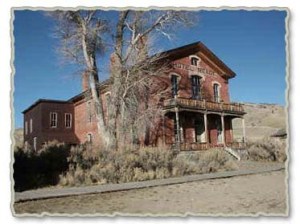 A while ago, I wrote here about why I teach legal research and citation. My reasons for teaching research were: 1) legal research is the foundation of legal practice; 2) legal resources are unique; 3) being able to find the law empowers you to solve problems; 4) legal research is intellectually challenging and interesting; and 5) researchers change law. But as I am working today on an exercise for my students about research ethics, I realize I forgot one– attorneys have an ethical duty to not just research, but to research well.
A while ago, I wrote here about why I teach legal research and citation. My reasons for teaching research were: 1) legal research is the foundation of legal practice; 2) legal resources are unique; 3) being able to find the law empowers you to solve problems; 4) legal research is intellectually challenging and interesting; and 5) researchers change law. But as I am working today on an exercise for my students about research ethics, I realize I forgot one– attorneys have an ethical duty to not just research, but to research well.
The Montana Rules of Professional Conduct start with Rule 1.1, a lawyer’s duty of competence: knowledge, skill, thoroughness, and preparation.
A lawyer shall provide competent representation to a client. Competent representation requires the legal knowledge, skill, thoroughness and preparation reasonably necessary for the representation.
Rule 3.1 states that a lawyer
shall not bring or defend a proceeding, or assert of controvert an issue therein 1) without first having determined through diligent investigation that there is a bona fide basis in law and fact for the position to be advocated . . . [or] 3) to extend, modify or reverse existing law unless a bona fide bases in law and fact exists for advocating doing so.
What I didn’t say in my earlier post is that legal research isn’t just foundational to legal practice because it’s a skill lawyers will use throughout their careers– it’s foundational because it’s a basic ethical duty that underlies our our relationship with our clients and how we represent our clients. And it’s not just that researchers change law, but that you have to research if you want to change law. Sometimes zealous advocacy requires arguing for a change in the law, but a lawyer can’t do that until he or she has researched and can support the argument that there is a reasonable basis for doing so.
Ethics don’t just require that in general lawyers are competent researchers but that they conduct the necessary research in every case. Rule 11 of the Rules of Civil Procedure state that
by presenting to the court a pleading, written motion, or other paper . . . an attorney . . . certifies to the best of the person’s knowledge, information, and belief, formed after an inquiry reasonable under the circumstances . . . (2) the claims, defense, and other legal contentions are warranted by existing law or by a nonfrivolous argument for extending, modifying, or reversing existing law or for establishing new law . . .
Some cases will take more research than others. Likely, those cases where the lawyer is arguing for “extending, modifying, or reversing existing law or for establishing new law” will take a lot of research. But it will be interesting and important research, and if that’s what it takes to represent the client, that’s what the lawyer needs to do. And to take it back to my original post, I teach legal research because I don’t just expect that my students will be able to look up the laws; I expect that my students will be ethical lawyers and exceptional researchers who will contribute to the development of law because they know how.

The Jameson Law Library blog will be taking a break next week for Thanksgiving.
Enjoy the holiday!

 The
The 

